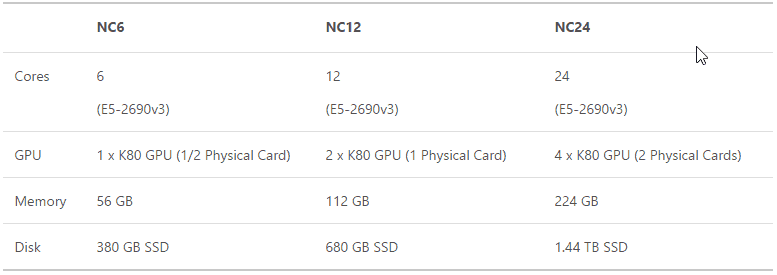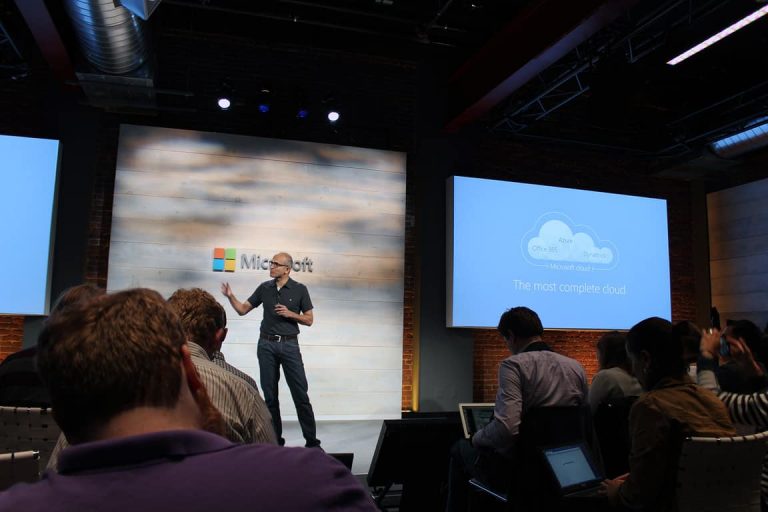One of the ways that customers utilize Microsoft’s Azure cloud computing platform is for running virtual machines for a variety of business use cases. Some of those uses include various scenarios where the ability to run visualization software is paramount, and where GPU performance is more important than CPU performance. For those instances, Microsoft announced today that the Azure team is placing N-Series virtual machines into preview which will optimize GPU performance for a variety of simulation applications.
As the Azure blog puts it:
Today we’re delighted to announce that Azure N-Series Virtual Machines, the fastest GPUs in the public cloud, are now available in preview. N-Series instances are enabled with NVIDIA’s cutting edge GPUs to allow you to run GPU-accelerated workloads and visualize them. These powerful sizes come with the agility you have come to expect from Azure, paying per-minute of usage.
Our N-Series VMs are split into two categories. With the NC-Series (compute-focused GPUs), you will be able to run compute intensive HPC workloads using CUDA or OpenCL. This SKU is powered by Tesla K80 GPUs and offers the fastest computational GPU available in the public cloud. Furthermore, unlike other providers, these new SKUs expose the GPUs through discreet device assignment (DDA) which results in close to bare-metal performance. You can now crunch through data much faster with CUDA across many scenarios including energy exploration applications, crash simulations, ray traced rendering, deep learning and more. The Tesla K80 delivers 4992 CUDA cores with a dual-GPU design, up to 2.91 Teraflops of double-precision and up to 8.93 Teraflops of single-precision performance. Following are the Tesla K80 GPU sizes available:

The blog post goes into significant detail on the speeds and feeds behind N-Series virtual machines, and so definitely take the time to check it out if you’re into that sort of thing. For the rest of us, it’s enough to know that some pretty interesting applications are in line for utilizing N-Series virtual machines and results from early adopters are impressive:
We’ve been working with various early adopters including BAFTA and Emmy award-winning studio in London Jellyfish Pictures. They have over 100 artists in London and additional artists across various geographies. They currently face a couple of challenges like remote artists having access to desktop accelerated applications whenever they’re not in the studio. Additionally, they’re currently rendering on CPU based virtual machines in Azure but with 4K and 8K on the horizon they have the need to render using GPU based rendering engines to not only cut their rendering times multiple fold but also get better results.
With Azure N-Series Jellyfish Picture’s artists are able to utilize the NV instances to run GPU and GRID accelerated applications such as Autodesk Maya. In addition, they’re able to speed up their rendering times by five times, utilizing the NC instances for CUDA based ray-tracing engines such as Octane and Redshift. This allows the studio to be more efficient and productive by focusing on their business value, which is producing and delivering cutting edge visual effects and simulations.
According to Jellyfish Pictures CTO Jeremy Smith:
“By using Azure, we can scale dynamically to our production needs on demand. When using our on-premise we can run in a seamless hybrid model allowing us to fill in the gap when our current infrastructure isn’t sufficient. What makes this a really exciting offering is that this applies to both CPU and GPU based solutions. The result is that production deadlines are met without ever over provisioning.”
The following video provides an overview of NVIDIA GPU support in N-Series:
Microsoft continues to make significant strides in providing industry-leading cloud computing resources to its customers. Let us know in the comments what you think about the N-Series virtual machines hitting preview status.


